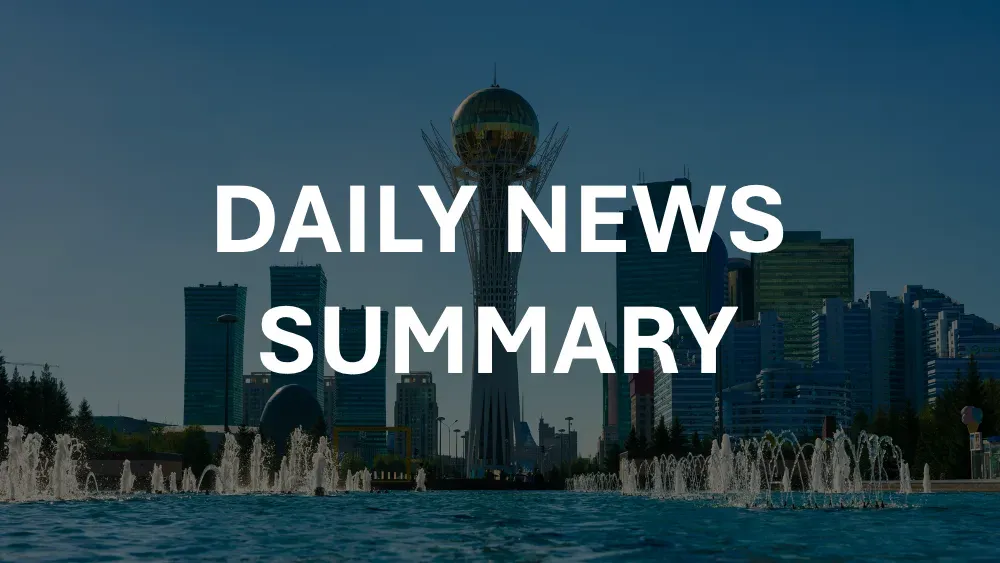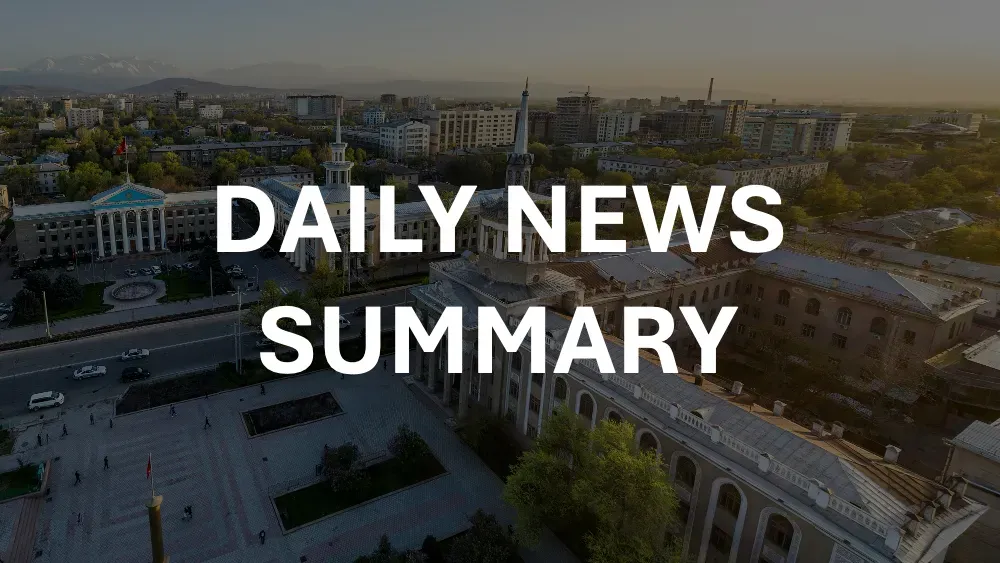📍 Get daily intelligence from Mongolia and Central Asia. Lexica News delivers local news that shapes global decisions—synthesized from local sources international media misses.
Mongolia's participation in regional economic corridors presents a complex landscape compared to its Central Asian neighbors. While Kazakhstan attracted $23 billion in Chinese capital in just six months of 2025, Mongolia's China-Mongolia-Russia Economic Corridor (CMREC) remains largely on paper despite representing one of six major BRI corridors. This comparative analysis examines how Mongolia, Kazakhstan, Kyrgyzstan, and Uzbekistan navigate Belt and Road Initiative participation, revealing dramatically different outcomes from similar strategic positions.
Market Context
The four landlocked economies share geographic constraints but approach regional integration differently. Kazakhstan, with GDP per capita significantly higher than other Central Asian states, leverages its position as the "buckle" of the Belt and Road Initiative. Mongolia, with a GDP of $23.59 billion in 2024, maintains the highest trade-to-GDP ratio at 145%, compared to Central Asian peers. Uzbekistan experienced 375% growth in BRI engagement in 2023, while Kyrgyzstan received $4.34 billion in Chinese investments since 2013.
These markets were selected for comparison based on shared landlocked geography, BRI participation since 2013, and similar roles as transit hubs between China and western markets. Key differences include political systems, resource endowments, and existing infrastructure quality.
Implementation Approaches
Mongolia's Trilateral Strategy
Mongolia's CMREC involves complex three-way negotiations between China, Russia, and Mongolia. The initially approved list of 32 joint projects represents "prospective avenues for cooperation" rather than specific commitments. Mongolia signed the tripartite agreement in 2016, but progress has stalled following the 2022 Russian invasion of Ukraine. The corridor requires upgrading the Central Railway Corridor by 2024, yet technical incompatibilities between Russian and Chinese rail standards create implementation barriers.
Kazakhstan's Hub Model
Kazakhstan established itself as a major BRI hub through direct bilateral engagement with China. The country announced a $20 billion investment package until 2025 focused on transit route diversification. Kazakhstan's approach emphasizes infrastructure development through its Nurly Zhol initiative, investing $9 billion in roads, railways, ports, airports, and IT infrastructure. The country secured a $1.3 billion agreement with China's CRRC Corporation for 200 locomotives and service centers.
Kyrgyzstan's Transit Focus
Kyrgyzstan leverages dual membership in both the World Trade Organization (1998) and Eurasian Economic Union (2015) to function as a strategic transit hub. The country operates as a re-export platform, importing goods at low WTO tariffs and re-exporting to other EAEU countries without additional duties. Major projects include the Kambar-Ata 1 Hydropower Plant and the China–Kyrgyzstan–Uzbekistan railway, both transforming economic connectivity.
Uzbekistan's Resource-Infrastructure Nexus
Uzbekistan's BRI engagement focuses on extraction, processing and transportation of natural resources, plus transport infrastructure for trade purposes. Major Chinese-funded projects include the $289 million Olympic Village in Tashkent and a $440 million chemical plant in Navoi. The country's strategy emphasizes bilateral cooperation without complex multilateral coordination.
Comparative Outcomes
Investment Volumes
Kazakhstan leads dramatically with $23 billion received in the first half of 2025 alone, making it the top BRI investment recipient globally. Mongolia's CMREC projects lack specific funding commitments, with only the $200 million Tavan Tolgoi Rail Project showing concrete investment, though still $800 million short of requirements. Kyrgyzstan attracted $4.34 billion since 2013, with $2.5 billion in energy and $1.69 billion in transport. Uzbekistan received $3.8 billion in Chinese investment by 2022, just behind Russia's $4.8 billion.
Economic Growth Impact
Mongolia achieved 5.0% real GDP growth in 2024, though driven primarily by mining rather than corridor development. Kazakhstan's economy benefits from over 20% of GDP generated in Almaty alone, a major BRI logistics hub. Kyrgyzstan sustained 9% annual GDP growth in 2022, 2023, and 2024, directly correlating with increased Chinese investment and transit operations. Uzbekistan's 375% BRI engagement growth contributed to economic acceleration.
Trade Facilitation Results
Kazakhstan operates the major Khorgos dry port straddling the China border, with potential for $5 billion annual transfer fees from goods transit. Mongolia's border crossings show no similar development, with trade still constrained by border delays, poor infrastructure, and weak regulatory environment. Kyrgyzstan achieved 90% reduction in customs clearance time for agricultural products between China and neighboring countries. Uzbekistan developed new freight corridors, including an eight-day route to Mongolia via Kyrgyzstan and China.
Debt-to-Investment Ratios
Mongolia faces the highest risk profile, with external debt at 221% of nominal GDP, raising debt trap concerns despite limited BRI infrastructure completion. Kyrgyzstan carries an estimated $4 billion in unpaid Chinese loans, representing 40% of GDP, but with functioning infrastructure assets generating returns. Kazakhstan maintains the healthiest debt profile relative to investment received, with diversified funding sources including IFC and EBRD. Uzbekistan's debt levels remain undisclosed but appear proportional to completed projects.
Understand Mongolia Like an Insider
This analysis draws from extensive research, but the story continues to evolve daily. Lexica synthesizes breaking developments from dozens of Mongolian news sources—from mining policy changes to local protests that never make international headlines.
Our daily intelligence briefs help executives, diplomats, and researchers track:
- Regulatory shifts affecting foreign investment
- Local opposition to development projects before they escalate
- Market dynamics that signal opportunity or risk
- Political developments that reshape the business landscape
Pattern Analysis
Successful Implementation Factors
Markets achieving measurable results share several characteristics. Kazakhstan and Uzbekistan pursued direct bilateral relationships with China, avoiding complex multilateral coordination that has stalled Mongolia's CMREC. Both successfully identified specific infrastructure needs aligned with Chinese interests—Kazakhstan's transit hub role and Uzbekistan's resource extraction requirements. Kyrgyzstan leveraged unique institutional advantages through dual WTO-EAEU membership to create immediate economic value.
Common Challenges
All four markets face similar constraints as landlocked economies requiring Chinese cooperation for infrastructure finance. Each experiences tension between maintaining sovereignty and accepting Chinese investment terms. Infrastructure projects consistently exceed initial cost estimates and timelines across all markets. Technical standards compatibility issues affect railway development in Mongolia and Kazakhstan, while Kyrgyzstan and Uzbekistan focus on road infrastructure to avoid gauge problems.
Divergent Outcomes
The key differentiator appears to be implementation complexity. Mongolia's trilateral approach with Russia creates competing interests, while other markets maintain bilateral focus with China. Kazakhstan's existing economic strength enabled negotiated partnerships rather than dependent relationships. Uzbekistan's abundant natural resources provide clear Chinese incentives for investment. Kyrgyzstan's institutional positioning created immediate revenue opportunities through transit trade.
Geopolitical Adaptation
Recent geopolitical shifts demonstrate varying adaptation capabilities. Kazakhstan pivots toward the Middle Corridor to reduce Russian dependence following Ukraine invasion. Mongolia seeks China-Mongolia-Russia summit coordination to revive stalled projects. Kyrgyzstan and Uzbekistan develop alternative routes through new freight corridors connecting Central Asia with Mongolia, demonstrating regional cooperation beyond Chinese initiatives.
Conclusion
Regional economic corridor participation produces dramatically different results across similar landlocked economies. Kazakhstan's position as the BRI's primary beneficiary stems from economic strength, strategic location, and bilateral implementation approach, generating over $20 billion annually in transit revenues and investment. Mongolia's trilateral CMREC strategy encounters systemic delays due to competing Russian and Chinese interests, leaving most projects conceptual despite a decade of planning. Kyrgyzstan leverages institutional advantages to achieve immediate economic benefits through re-export operations, while Uzbekistan's resource-focused approach attracts steady Chinese investment in extractive industries.
The comparative evidence indicates that bilateral engagement strategies outperform multilateral approaches in BRI corridor development. Markets maintaining economic leverage achieve partnership-based relationships, while resource-dependent economies risk debt accumulation. Technical compatibility issues require early resolution to enable infrastructure progress. Geopolitical flexibility becomes essential as global trade patterns shift, with successful markets developing alternative corridor options beyond initial BRI frameworks. The ongoing evolution of these corridors reflects broader Eurasian economic integration patterns, where geographic advantages must be coupled with institutional capabilities and implementation strategies to achieve meaningful development outcomes.
FAQs
Why were these specific markets chosen for comparison?
All four countries are landlocked, participate in the Belt and Road Initiative since 2013-2016, serve as potential transit hubs between China and western markets, and face similar geographic constraints requiring infrastructure investment. They represent different approaches to corridor development within similar contexts.
What accounts for Kazakhstan's dramatically higher BRI investment compared to other markets?
Kazakhstan combines several advantages: largest economy in the region, strategic position between China and Europe, existing infrastructure base, and political stability. The country negotiated from economic strength rather than dependence, securing partnership-based rather than aid-based relationships with China.
How reliable is the comparative data across these markets?
Data reliability varies by country and metric. Kazakhstan and Mongolia provide consistent World Bank reporting, Kyrgyzstan offers detailed project-level data, while Uzbekistan's investment figures come from multiple sources with some gaps. All debt figures represent government-reported statistics cross-referenced with international organizations.
What market-specific factors most influence corridor development success?
Three factors emerge as critical: implementation complexity (bilateral vs multilateral), existing economic strength enabling negotiated partnerships, and technical infrastructure compatibility. Markets avoiding complex multilateral coordination and maintaining bilateral focus achieve faster results.
Which patterns hold consistently across all markets?
All markets experience cost overruns and timeline delays in infrastructure projects, face sovereignty concerns with Chinese investment, struggle with technical standards compatibility, and show increased trade volumes where infrastructure completion occurs. Debt accumulation relative to project completion varies significantly.
How do recent geopolitical changes affect these corridor comparisons?
The 2022 Ukraine invasion created new dynamics, with Kazakhstan developing Middle Corridor alternatives, Mongolia seeking trilateral summit coordination, and Central Asian countries developing intraregional routes. Markets with diversification options show greater resilience than those dependent on single corridor strategies.
What explains the success of Kyrgyzstan's approach despite its smaller economy?
Kyrgyzstan leverages unique institutional advantages through dual WTO-EAEU membership, enabling immediate revenue generation through re-export operations. This provides quick returns on Chinese investment, unlike infrastructure-heavy approaches requiring longer development periods
Track Mongolia's Critical Minerals Sector with Local Intelligence
The rare earth story exemplifies why local sources matter. While international media reports MOUs and ministerial visits, Mongolian outlets cover the community protests, water disputes, and regulatory changes that actually determine project outcomes.
Lexica delivers what you're missing:
- Daily briefs at 7AM Ulaanbaatar time covering 40 top stories from politics to economics
- Full-text synthesis from sources in Mongolian
- Searchable archive to track how today's announcements connect to yesterday's promises
- Multi-country coverage across Central Asia for regional context
Whether you're evaluating investment opportunities, monitoring supply chain risks, or analyzing geopolitical developments, local intelligence reveals what international headlines obscure.










